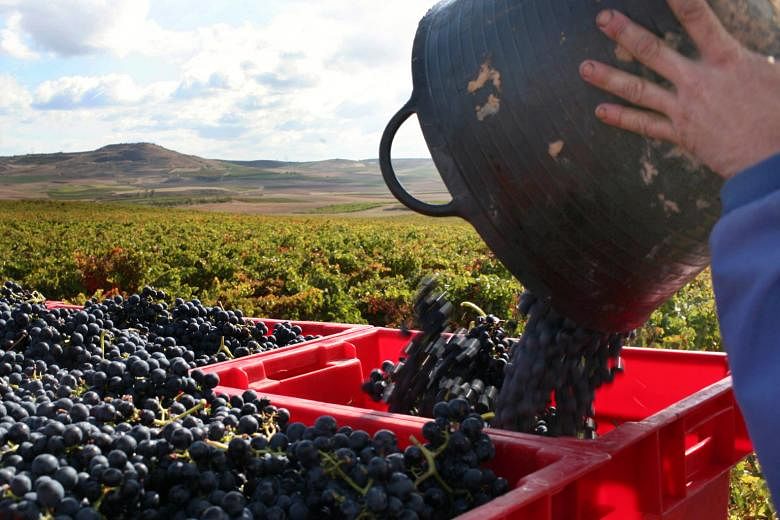NEW YORK • Unprecedented heat has pushed global average temperatures into alien territory and scientists have long established humanity as the dominant cause.
Now, even the grapes are talking, and new research makes it easy to view the rising thermometer through a rose-coloured glass.
Wine grapes are very sensitive to their climate.
Vintners historically produce top wines when an early wet season soaks the plants and a drought succeeds it, allowing the fruit to ripen.
Two scientists affiliated with Nasa, Columbia's earth sciences centre and Harvard have assembled records of grape harvests for the past 400 years to show trends produced by changes in temperature and precipitation.
The research, published last week in Nature Climate Change, concludes that warming since about 1980 has changed the way wine grapes grow.
They no longer need to rely on late-season heat and drought, because temperatures are pumped up already.
The good news is that there has probably been a net increase in wine quality.
The bad news: It is not likely to last as warming continues.
Europe received a taste of its hotter future in 2003, when an August heat wave, unprecedented in about 500 years, killed at least 20,000 people.
If the extreme heat was a net benefit for vintners, it did not show up in bottles.
"There may be an upper limit" to the heat's positive effect on wines, said Mr Benjamin Cook, the study's lead author.
"For example,2003 was the earliest harvest in our record (about a month early), but quality ratings were middling for this year."
The grape harvest date and summer temperature charts are not exact opposites. But comparing them shows that they correlate inversely.
Summer temperatures in Europe take off at about the same time that grape harvest dates start to peel back.
They are not identical because the grape harvest chart, while mostly a function of temperature, also reflects precipitation trends and growing practices.
Wetness can slow the harvest, though much more weakly than heat advances it.
Watching the world warm through wine production is vital to vintners, their local economies and wine aficionados.
In the scheme of things, it is not the global economy's biggest problem.
The global economy's biggest problem is that humanity is adding carbon dioxide, the most important heat-trapping gas, to the atmosphere faster than at any time since the dinosaurs were wiped out.
A study in Nature Geoscience, published simultaneously with the wine study, concludes that carbon is being injected into the atmosphere at rates unseen since a major heating event about 56 million years ago.
There is no analogue to human- made warming, the scientists say. The rate of climate change will substantially exceed any episode in the Cenozoic Era, going back 66 million years.
Bad years ahead for Merlot.
BLOOMBERG

